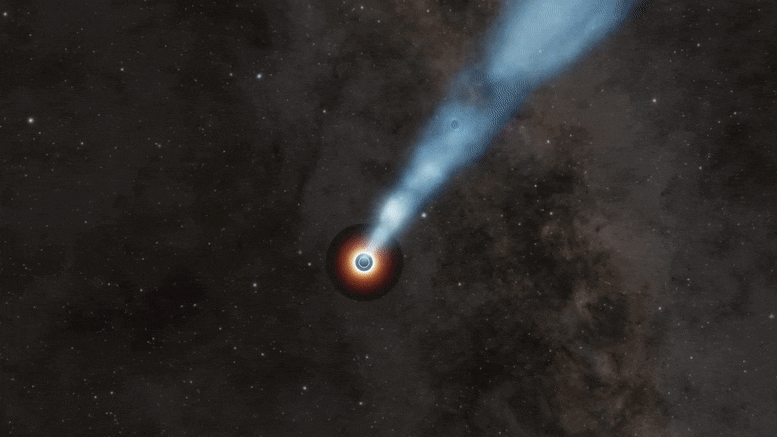Astronomers find evidence for the tightest-knit supermassive black hole duo observed to date.
Locked in an epic cosmic waltz 9 billion light years away, two supermassive black holes appear to be orbiting around each other every two years. The two giant bodies each have masses that are hundreds of millions of times larger than that of our sun, and the objects are separated by a distance roughly 50 times that which separates our sun and Pluto. When the pair merge in roughly 10,000 years, the titanic collision is expected to shake space and time itself, sending gravitational waves across the universe.
A Caltech-led team of astronomers has discovered evidence for this scenario taking place within a fiercely energetic object known as a quasar. Quasars are active cores of galaxies in which a supermassive black hole is siphoning material from a disk encircling it. In some quasars, the supermassive black hole creates a jet that shoots out at near the speed of light. The quasar observed in the new study, PKS 2131-021, belongs to a subclass of quasars called blazars in which the jet is pointing toward the Earth. Astronomers already knew quasars could possess two orbiting supermassive black holes, but finding direct evidence for this has proved difficult.
